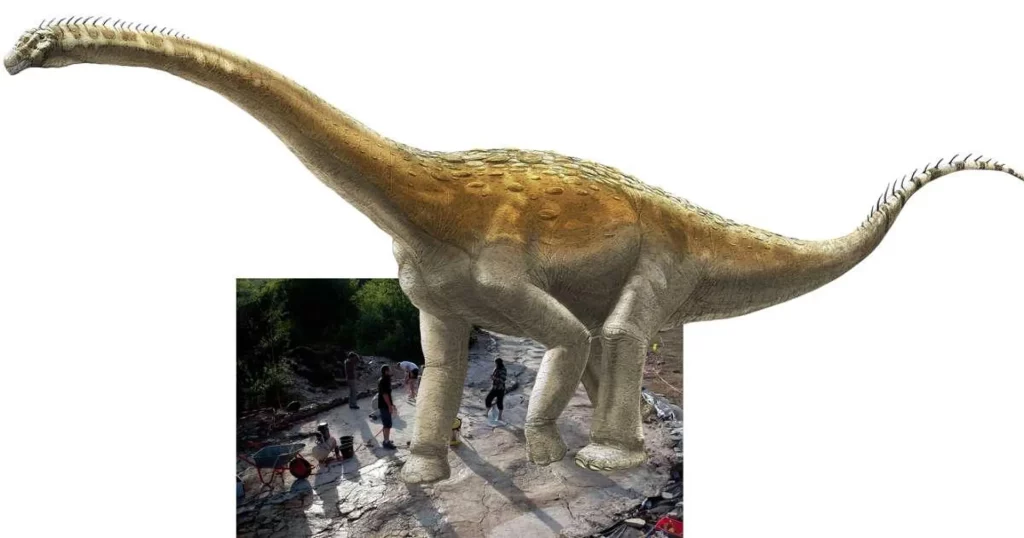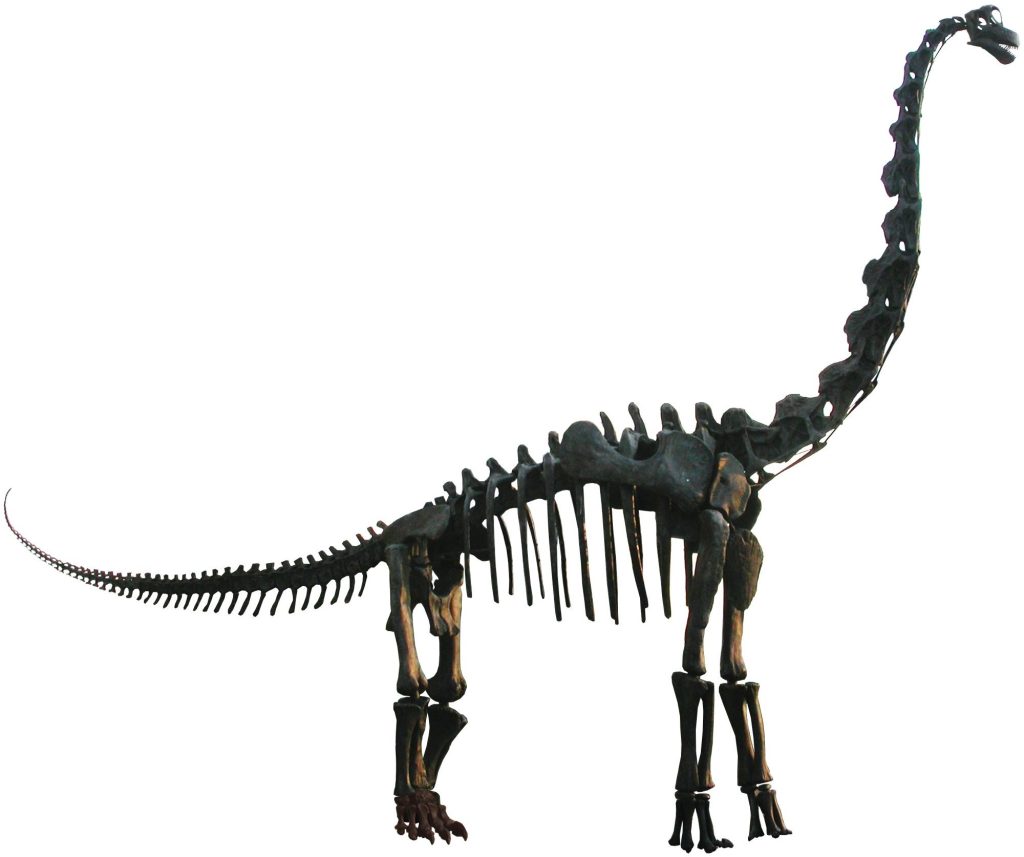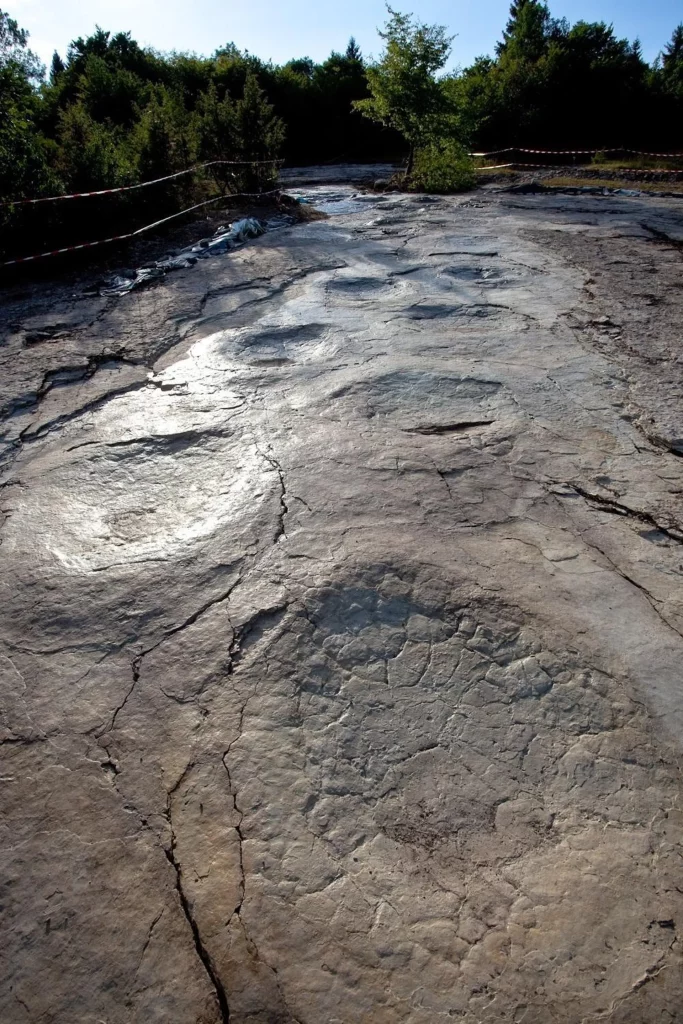Big feet, huge feet or gigantic feet? Is size all in the eye of the beholder? Or were the footsteps found along today’s race route maybe a bit exaggerated?
Today’s stage meanders through the Jura – the name of a mountain range. It’s also the name giver of the Jurassic era, as we know the middle part of ‘the age of dinosaurs’. The Jurassic Mountains are not the most famous site of dinosaur skeletons of Jurassic age, but spectacular dinosaur footprints have been found – both on the French and Swiss sides.

Dino-ABC
We know the long-necked dinosaurs from the end of the Jurassic (roughly 150 million years ago) mainly from the beautifully preserved skeletons from the United States, Portugal and Tanzania. It’s the long-necked ones with the dinosaur names everyone knows. Apatosaurus, Brontosaurus, Camarasaurus, Diplodocus……..It almost becomes a long-necked dinosaur alphabet. Many of those long-necked dinosaurs got quite big. Some became downright gigantic.
A large long-necked dinosaur just ate five hundred kilos of green fodder a day. A herd of those animals would strip a decent sized big city park bare in one day. With the long necks you would probably think of a kind of ‘giraffe’ solution? That they got the tastiest leaves at the top of the tree like we see in the iconic Jurassic Park scene.

However, there is something else that makes those necks very practical. You can graze a whole area bare without taking one step because you just as easily nibble ten meters to the left and ten meters to the right. All in all, these giant herbivores were the undisputed success of the late Jurassic. But how do we know if they actually lived in herds? Thanks to finds of paw prints, including in the US and Portugal, we have a good picture of the herd behavior of these animals.
Very big feet?
A herd of twenty-meter long-necked dinosaurs is already impressive. A herd of thirty-meter long-necked dinosaurs is even more exciting. And those who believed the reports in the press a few years ago might have had even larger long-necked dinosaurs on their minds. Yet the story of the very greatest Jurassic dino from the French Jura is perhaps a bit exaggerated.
My shoe size is EU42, so about 30 centimeters long. With footprints of three meters (three METERS!) in length, as was read in some newspaper articles, the maker of the petrified footprints in Plagne (near Lyon) would therefore have had shoe size 420. That seems very big…

The long-necked dinosaur that passed there 150 million years ago had rear-foot soles of about one meter from toe to heel. But in the juicy limestone mud, the gigantic legs literally pushed aside walls of mud. The mud walls pushed to the side made the potholes with edge-and-all look a bit bigger. And once dried out, the potholes and walls were preserved as much-too-large footprints.
Gigantic feet
In some layers, the picture becomes even more spectacular. There we find the real boasters, the real exaggeration fossils. Due to the enormous weight of the giant dinosaurs, the mud was also pushed aside a layer deeper – much further than the mud edges on the surface. Those so-called ‘undertracks’ were also preserved as a fossil. They were therefore even bigger than the maker’s already quite large soles. Add to that the footprints of the front paws (which left a footprint just before the back paws), and you’ll end up with a ten-foot hole.
The comment in the press release issued by the researchers stated very neatly that the largest tracks discovered at Plagne were more than one meter long. They also said clearly that the mud bumps are about three meters wide. However this was then quickly taken up in the media as if they had actually left three-meter footprints.
A little lost in translation maybe? But shoe size 140 is also quite acceptable.






